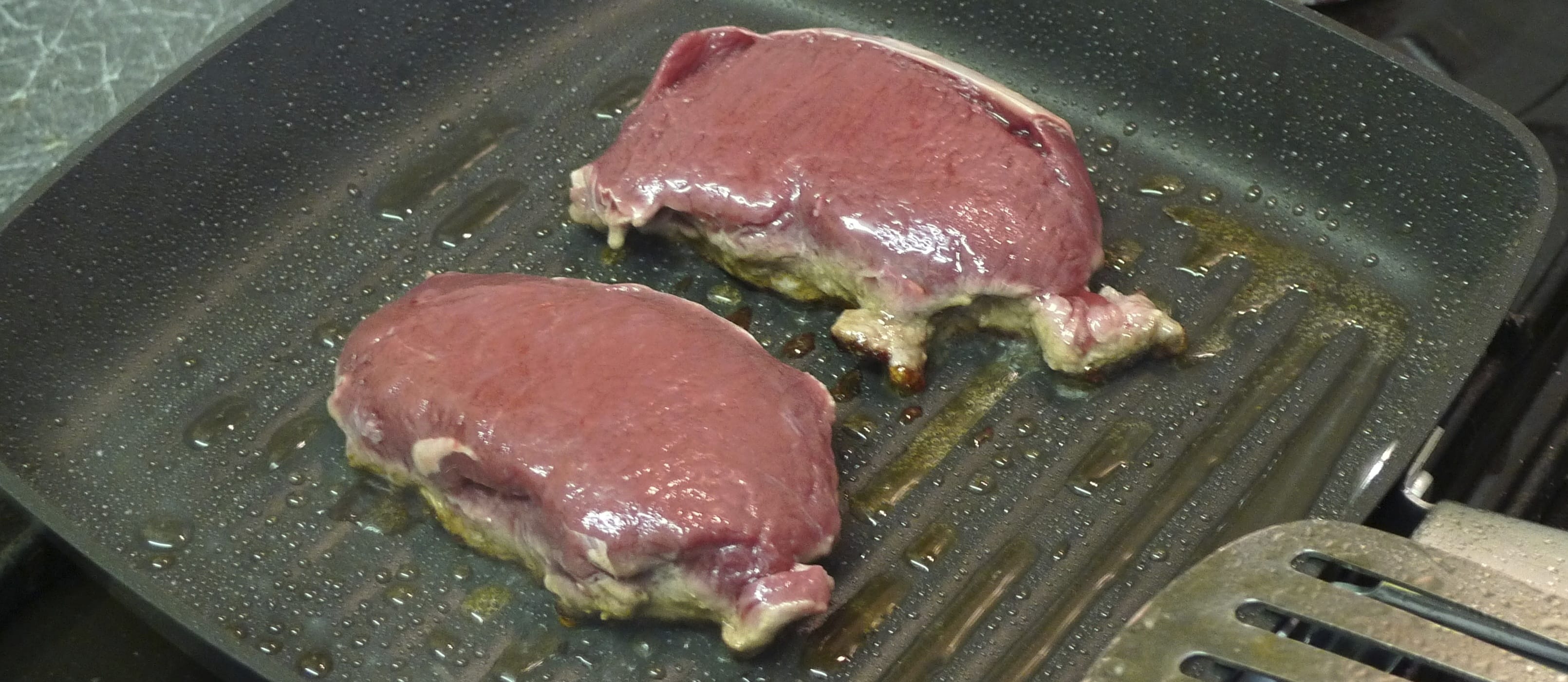We’ve known since 1939 that there were “cancer-producing substances” in roasted meat. Scientists have since identified these compounds as heterocyclic amines, described by the National Cancer Institute as “chemicals formed when muscle meat, including beef, pork, fish, and poultry, is cooked using high-temperature methods, such as pan frying or grilling….”
Studies done on Long Island and around the world have shown women eating more broiled, grilled, fried, barbequed, and smoked meats appear to have up to five times the risk of developing breast cancer.
More than 85% of breast cancers are sporadic and attributable to long-term exposure to environmental carcinogens, such as those in the diet, through a multistep disease process progressing from non-cancerous to premalignant and malignant stages. Most cancer-causing agents are involved in either the initiation stage of cancer, triggering the initial DNA mutation (like radiation), or the promotion stage of cancer, promoting the growth of the tumor (certain hormones like IGF-1). But heterocyclic amines in cooked meat like PhIP are considered “three strikes” carcinogens because they are not only DNA-damaging mutagens and promote cancer growth, but also increase its metastatic potential by increasing tumor invasiveness.
Strike 1: By asking women undergoing breast reduction surgery about their meat cooking methods, researchers were able to directly correlate the number of DNA mutations found in breast tissue with the estimated dietary intake of these cooked meat carcinogens.
Strike 2: In my 4-min. video Estrogenic Cooked Meat Carcinogens I show that not only may these meat chemicals trigger the original cancer-causing mutation, they may also then promote the growth of the tumor. PhIP for example activates estrogen receptors on human breast cancer cells almost as powerfully as pure estrogen. Even at very low doses, the cooked meat chemical PhIP appears to drive the growth of breast cancer.
Strike 3: Check out my 3-min video PhIP: The Three Strikes Breast Carcinogen to see what affect these cooked meat carcinogens may have on the invasiveness and metastatic potential of human breast cancer. The growth hormone IGF-1 may also promote tumor progression and invasion (see IGF-1 as One-Stop Cancer Shop). IGF-1 is released by our liver in response to animal protein consumption regardless of how it’s cooked (why? See Higher Quality May Mean Higher Risk.) On the other hand, broccoli and Indian gooseberries may have both anti-proliferative and anti-invasive properties: Lung Cancer Metastases and Broccoli and Amla Versus Cancer Cell Invasion.
Most of the experiments on the cancer-causing effects of cooked meat chemicals were done on breast cells in a petri dish, though. How do we know these carcinogens make it not only into the breast after you eat cooked meat, but into the breast ducts where most breast cancers arise—so-called ductal carcinoma. Researchers didn’t know for sure, until a study out of Canada measured the levels of PhIP in the breast milk formed in those ducts of nonsmoking women. The average concentration of the “three strikes carcinogen” found in the breast milk of meat-eating women corresponded to significant cancer growth activation. One of the women was vegetarian, though, and none was detected in her breast milk.
-Michael Greger, M.D.
PS: If you haven’t yet, you can subscribe to my videos for free by clicking here and watch my full 2012 – 2015 presentations Uprooting the Leading Causes of Death, More than an Apple a Day, From Table to Able, and Food as Medicine.
Adapted from Kathy Freston’s excellent post Anti-Breast Cancer: The ‘Three Strikes’ Carcinogen to Avoid
